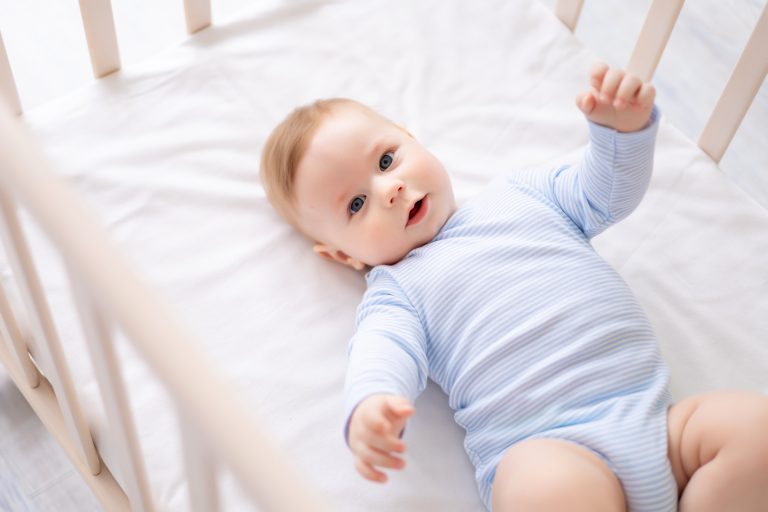The decision about where your baby will sleep is a significant consideration for new parents. Traditionally, cribs have been a standard choice for providing a safe and comfortable sleep space for infants.
However, as parenting philosophies evolve, some families may question whether a crib is absolutely necessary. In this article, we explore the pros and cons of using a crib and alternative sleep arrangements for your baby.
The Role of Cribs in Infant Sleep
Cribs as Safe Sleep Spaces
Cribs have long been promoted as safe sleep spaces for infants. Designed with high sides and sturdy construction, cribs aim to prevent accidental falls and provide a secure environment for babies to sleep. It would be ideal that the crib has a firm mattress and no soft bedding to reduce the risk of Sudden Infant Death Syndrome (SIDS).
Convenience and Organization
Cribs often come with attached storage options, such as drawers or shelves, providing convenient space to store baby essentials like diapers, blankets, and clothing. This built-in organization can be a practical feature for parents looking to streamline the nursery.
Alternatives to Traditional Cribs
Co-Sleeping Options
Some parents opt for co-sleeping arrangements, where the baby shares a sleep surface with one or both parents. This can involve a co-sleeper bassinet attached to the adult bed or simply having the baby sleep directly in the parents’ bed. Proponents argue that co-sleeping fosters a stronger parent-child bond and facilitates breastfeeding during the night.
Bassinets and Cradles
Bassinets and cradles are smaller sleep options that provide a cozy and enclosed space for newborns. These alternatives to cribs are often more portable and can be placed in the parents’ bedroom for easy access during nighttime feedings. However, they have weight and age limitations, and babies may outgrow them relatively quickly.
Considerations for Using a Crib
Space Limitations
In smaller living spaces, fitting a crib may pose a challenge. Some parents find that alternatives like bassinets or co-sleeping arrangements better suit their spatial constraints. It’s essential to assess your living situation and determine what sleep solution aligns with your family’s lifestyle.
Mobility and Travel
Cribs are not easily portable, which can be a consideration for families who travel frequently or move between different rooms in the house. Portable cribs, often referred to as playards or travel cribs, offer a solution for on-the-go sleeping arrangements. These collapsible cribs can be convenient for families with an active lifestyle.
Financial Considerations and Budget-Friendly Options
Cost of Cribs
Cribs, especially high-quality and convertible models, can be a significant investment. For families on a budget, this cost may be a factor in their decision-making process. While safety is paramount, there are budget-friendly crib options available that meet safety standards without breaking the bank.
Convertible Cribs
Convertible cribs that transform into toddler beds or even full-sized beds offer long-term value. Although these cribs may have a higher initial cost, the ability to adapt as the child grows can be a cost-effective choice in the long run, eliminating the need for additional transitional furniture.
Safety Considerations for Cribs and Alternatives
Crib Safety Standards
Cribs must adhere to safety standards to ensure the well-being of the baby. These standards include specifications for slat spacing, mattress firmness, and overall construction. When choosing an alternative sleep arrangement, such as a bassinet or co-sleeper, it’s crucial to verify that it meets safety guidelines and recommendations.
Parental Sleep Awareness
For parents considering co-sleeping, awareness of safe sleep practices is paramount. The sleep surface should be free of soft bedding, and parents should refrain from consuming substances that may impair their alertness during the night. The AAP provides guidelines for safe sleep environments, whether the baby is in a crib or sharing a sleep surface with parents.
Conclusion
The question of whether a crib is absolutely necessary for your baby depends on various factors, including your living situation, parenting preferences, and budget. Cribs offer a designated and secure sleep space with longevity through convertible options, while alternatives like co-sleeping arrangements, bassinets, and cradles provide different benefits based on family needs.
Ultimately, the key is to prioritize safety and create a sleep environment that aligns with your family’s values and circumstances. Whether you choose a crib, a co-sleeper, or a bassinet, ensure that the sleep space adheres to safety standards and provides a secure and comfortable haven for your little one. The decision is a personal one, influenced by lifestyle, cultural practices, and individual preferences.


Comments are closed.